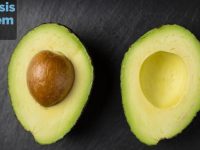There are three macronutrients (four, if you include alcohol). So far on this site, I’ve only written a “guide” for one of them: protein. Protein is definitely the macronutrient I get the most questions about, and in general is more complicated than either fats or carbohydrates, but I have meant to write guides for all the macronutrients.
Today, we begin the guide on carbohydrates. For this installment, we’re going to cover the basics of dietary carbohydrates—the simplest hexose forms, the common complexes, etc. In subsequent installments, we’ll look at carbohydrate digestion and absorption, the common questions and concerns revolving around carbohydrates, and the unusual (or less usual) forms.
Here we go!
Monosaccharides: The Simplest Sugars
Nearly all dietary carbohydrates are composed of only three types of molecule: glucose, fructose, and galactose. These are the monosaccharides—all hexoses, so-called because they have six carbons—and together they form the diversity of carbohydrates in our diet.
None of the monosaccharides are commonly found by themselves (though some foods, like honey, do contain them); they are almost always a part of a complex, whether a simple one like sucrose or a more complex one like amylose. Regardless of complexity, though, all digestible carbohydrates are ultimately broken back down into their monosaccharide components—we cannot absorb larger carbohydrates.
Let’s examine each of the monosaccharides in turn:
Glucose
Glucose is the most common and most important of the monosaccharides. It is the hexose that builds up starch, it’s half of a sucrose (table sugar) molecule, and it’s the only ingredient in cellulose, the most abundant organic compound on Earth (it also happens to be indigestible).
Pure glucose is absorbed from the small intestine at a rate of about 1 gram per minute. In terms of a normal diet, this is fast enough to not pose digestion-related problems as we can reasonably expect to be able to absorb upwards of 240 grams of carbohydrate from a single meal (60 grams per hour, four hours of absorption). For an athlete, however, 60 grams per hour can be performance limiting as they may use more than this.
When absorbed, glucose is immediately available for use.
Fructose
Fructose is the second-most common monosaccharide. It’s primarily known for it’s role in sucrose (and high-fructose corn syrup), but it also is the primary component of fibers like inulin (and other fructans like it).
Fructose is absorbed via a different transporter than glucose, and thereby adds to the amount of carbohydrate that can be absorbed in a single hour. Fructose is more slowly absorbed—only about 30 grams per hour—but this brings the total rate up to 90 grams per hour, which can be desirable for athletes.
The 30 gram per hour absorption rate can create digestion issues for certain people, as the remainder is digested by our gut bacteria instead with often uncomfortable results. Before we could mass-produce table sugar and high-fructose corn syrups, it would have been very challenging to get 30 grams of fructose in a single hour; now, it is quite simple. To avoid the bloating and gas associated with excess fructose intake, limit consumption to less than 25-30 grams in a single sitting.
Fructose cannot be used directly by our body, but must be processed into glucose first (by route of liver glycogen). The liver preferentially takes up fructose over glucose, which makes it a great sink for the fructose in our diet. Any fructose that cannot be turned into liver glycogen will be converted to fat; however, with a capacity of 80-100 grams of glycogen, it’s extremely uncommon for fructose to go this route, and when it does happen, it’s in circumstances of extreme overconsumption of calories.
This potential for fructose to be turned into fat (and not just any fat, but liver fat!) has led many to worry about the role fructose plays in non-alcoholic fatty liver disease. Rest assured, there is no strong evidence that fructose causes this outside of the context of extreme caloric intake. This isn’t to say you should saturate your diet with fructose, of course—just that you shouldn’t worry about the occasional sugar binge leading to a disease down the line.
Galactose
With glucose and fructose discussed, all that remains is galactose. Galactose is the least common and least interesting of the monosaccharides. There is only a single common source of galactose, which is the milk sugar lactose (formed of one unit of glucose and one unit of galactose). Galactose shares an intestinal transporter with glucose, which means it cannot increase carbohydrate absorption for athletes. Once absorbed, galactose is simply converted into glucose, and that is where its story ends.
Galactose has some more interesting roles to play outside the world of nutrition, but those aren’t relevant here. As far as nutritionists are concerned, galactose is essentially glucose.
Disaccharides: Sugar Duos
Disaccharides are the next simplest forms of sugar, composed of only two monosaccharides each. Even though math would suggest there are six permutations available, in reality there are only four—and two of them are glucose-glucose molecules!
Disaccharides are more common than monosaccharides in food, but still not as common as the longer starch and fiber molecules.
Sucrose
Sucrose is the most common disaccharide, found in fruits the world round as well as our sugar bins. It is formed of a single unit of glucose bound to a single unit of fructose.
Sucrose is easily split into its constituent monosaccharides by the enzymes in the lining of our small intestine, after which they are treated exactly as the monosaccharides they are.
Aside from being a cheap and readily available source of glucose and fructose (in a 50/50 ratio), there is nothing particularly notable about sucrose. It should be limited in the diet as it does not contribute anything aside from calories, though athletes can at times benefit from it as a rapid source of energy.
Lactose
Lactose is the only other common disaccharide. Composed of a glucose bound to a galactose, it is present in all true milks (that is, the milks mammals produce for their offspring).
All healthy humans are born with the ability to digest lactose—they produce the enzyme lactase—an ability that persists through the age of 4-7 or so. Some people, notably those of Northern European heritage, continue producing lactase through adulthood and thus can enjoy dairy in large quantities their entire life. Without access to lactase, lactose becomes indigestible and can lead to cramping, gas, and bloating. This is termed “lactose intolerance”.
As simple as it sounds, lactose intolerance is actually commonly misunderstood. To begin with, lactose intolerance is not an allergy and is not life-threatening. There are milk allergies (more common in children than adults) that do pose a more significant risk, but lactose intolerance is simply the inability to digest a lactose molecule and leads to no immunological reactions like a true allergy.
Second, all humans continue to produce small amounts of lactase throughout their life. The true prevalence of acute lactose intolerance is unknown because many people who think they are intolerant of lactose are, in fact, not as intolerant as they believe. Most people can consume around 12 grams of lactose in a single serving (about 8 ounces or 235 milliliters of milk) without consequence. Of course, there’s nothing in dairy that you cannot get from other foods and there’s nothing wrong with cutting dairy out of your diet if you’re not as tolerant of lactose as a Swede—but chances are you can still enjoy ice cream, yogurt, or any other dairy product daily, albeit in smaller amounts, without any issue.
Maltose
Maltose is an uncommon disaccharide formed mostly as a byproduct of the production of grains into brewer’s malt. We can all be thankful for this, as the maltose helps make beer what it is.
Aside from its role in the production of beer and occasional use as a sweetener, there is little more to say about maltose. It’s comprised of two glucose molecules, which makes it an all-glucose sugar, but is only about half as sweet as fructose, which means you’d need to use twice as much to get a similar level of sweetness.
Trehalose
Trehalose always makes me think of treacle, but alas, treacle and trehalose are completely unrelated, the former being a sugar byproduct that is still largely sucrose and the latter being an incredibly uncommon disaccharide found only in small amounts in a few random plants and animals.
Like maltose, trehalose is formed of two glucose units, but they are linked at different carbons. There’s not much more to say about trehalose, except that it was recently in the news because its production helped fuel a spike in the foodborne illness Clostridium difficile.
Starches: Long Carbohydrate Chains
Starches are long chains of glucose and the predominant source of carbohydrate calories for humans. There are three types of starches, though only two of them are common in the diet (amylose and amylopectin) while the remainder is our storage form of carbohydrate (glycogen). Amylose and amylopectin are found together, though amylopectin tends to be found in greater amounts in most foods.
Amylose
Amylose is the simplest of the glucose chains—it’s just one glucose linked to another, linked to another, ad (near) infinitum. As there are only two “caps” to this chain, glucoses can only be removed two at a time, making amylose the slowest-digesting starch (ignoring all other factors).
Because amylose compacts more easily due to its structure, it is primarily responsible for any resistant starch properties a food will have. Resistant starch acts somewhat like fiber in that our body cannot digest it (or cannot digest it as completely or as quickly).
Amylopectin
Unlike amylose, amylopectin is a highly-branching chain of glucoses. Because there are so many chains, it is more rapidly digested into its constituent glucoses. This has led to the hypothesis that amylopectin is a better fuel for athletes as its glucoses will be more rapidly available, and this hypothesis has led to the production of high-amylopectin products called “super starches” (like waxy maize) to fuel the market.
Unfortunately, there’s no evidence that these products are, in fact, superior. The essential problem with fueling isn’t that we’re incapable of digesting our carbohydrates fast enough, but that we cannot absorb them rapidly enough. Since the glucoses from amylopectin must be absorbed the same as the glucoses from starch (or sugar, for that matter), there is no advantage, and such products are therefore not worth it.
Glycogen
Many might find it odd to consider glycogen a starch (much as they might find it odd to consider chitin in crab shells a fiber), but a starch it is. Plants do not have a monopoly on storage chains of carbs, and glycogen is simply how we animals store ours.
Structurally, glycogen resembles amylopectin—it is highly branching. We store glycogen both in the liver and the muscles. Liver glycogen can be released into the blood stream to be used by any system; muscle glycogen is locked in the muscle it’s stored in and can only be used by that muscle.
We consume very little glycogen in our diet. Meat is already very low in glycogen compared to protein, fat, and water, and the glycogen that is present is rapidly broken down into lactate within 24 hours of an animal’s death.
Next Time:
That sums up the caloric sources of carbohydrates in the diet, but there are, of course, more! In the next segment, we’ll cover the indigestible fibers and start to put carbohydrates into context in a climber’s diet.
Until then!














